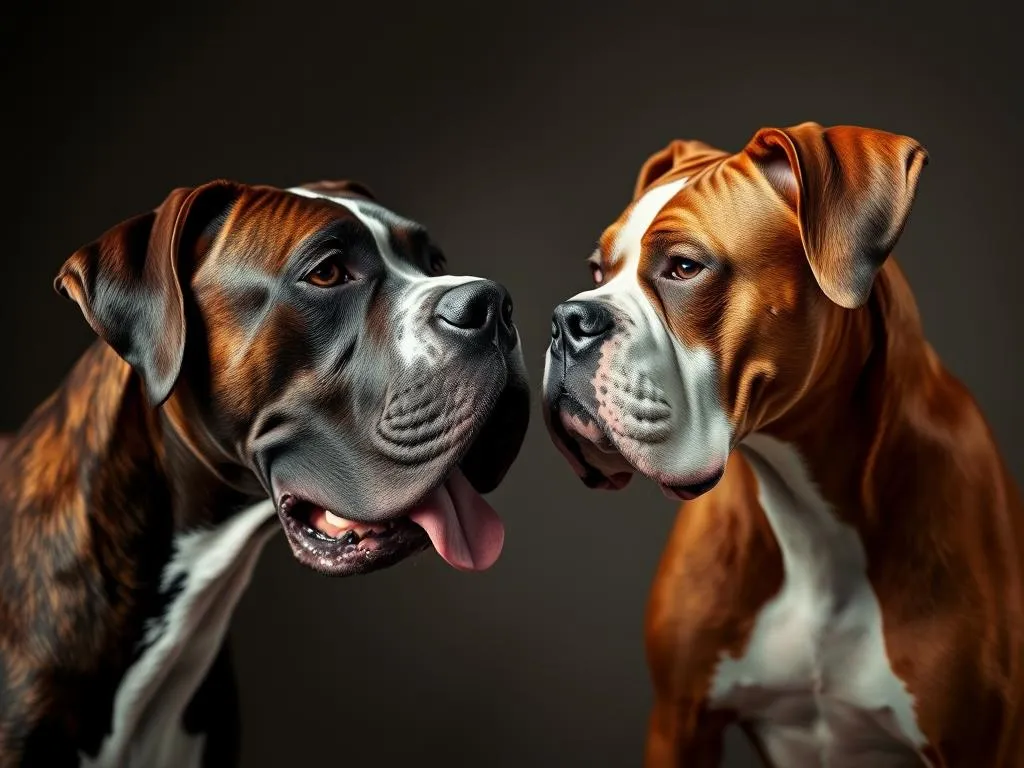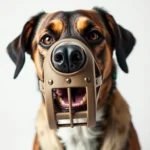
Choosing the right dog breed can be a daunting task, especially with so many options available. Two popular breeds among families are the Great Dane and the Boxer. Both breeds have distinct characteristics, making them suitable for different lifestyles and preferences. Here, we delve into a comprehensive comparison of these two breeds, helping potential dog owners make informed decisions that suit their living situations and family dynamics.
Breed Overview
Great Dane
The Great Dane has a storied history, known for its regal stature and gentle demeanor. Originating in Germany, this breed was initially bred for hunting large game, including wild boar. Over time, they transitioned to companions and guardians, earning the nickname “gentle giant” due to their large size combined with a calm temperament.
In terms of physical characteristics, Great Danes are one of the largest dog breeds, typically weighing between 110 to 175 pounds. They can stand as tall as 30 inches at the shoulder, with some individuals reaching even greater heights. Their coat is short and smooth, available in various colors, including fawn, brindle, blue, black, and harlequin.
Great Danes are known for their friendly and affectionate temperament. They are generally good-natured, loyal, and gentle, making them excellent family pets. However, their size requires proper training and socialization to ensure they are well-behaved in various situations.
Boxer
The Boxer is another breed with a rich history, believed to have descended from the now-extinct Bullenbeisser and the English Bulldog. They were initially bred for hunting and later evolved into versatile working dogs, serving in various roles, including police and military work.
Boxers are medium-sized dogs, typically weighing between 50 to 80 pounds and standing about 21 to 25 inches tall. They have a muscular build, a square jaw, and a short coat that comes in fawn, brindle, or white. Known for their playful energy, Boxers are highly active and require regular exercise to stay healthy.
The temperament of Boxers is characterized by their playful and energetic nature. They are known to be affectionate, loyal, and protective of their families. Boxers are also highly intelligent, which makes them trainable but can also lead to stubbornness if not managed properly.
Health Considerations
Common Health Issues in Great Danes
Great Danes are known for their impressive size, but this can also lead to various health issues. Common genetic disorders include hip dysplasia, which is a malformation of the hip joint, and dilated cardiomyopathy, a serious heart condition. Additionally, due to their size, Great Danes are prone to bloat, a potentially life-threatening condition where the stomach fills with gas and twists.
The average lifespan of a Great Dane is around 7 to 10 years. Factors affecting their lifespan include genetics, diet, and overall care. Regular veterinary check-ups and a balanced diet can help mitigate some health risks.
Common Health Issues in Boxers
Boxers, while generally robust, are also predisposed to certain health conditions. They are known to suffer from certain cancers, such as lymphoma and mast cell tumors, as well as heart conditions like arrhythmogenic right ventricular cardiomyopathy. Additionally, Boxers can be prone to skin allergies and hip dysplasia.
The average lifespan of a Boxer ranges from 10 to 12 years. Regular exercise, a healthy diet, and preventive veterinary care can significantly influence their health and longevity.
Exercise and Activity Level
Exercise Needs of Great Danes
Despite their size, Great Danes require moderate exercise. They typically need about 30 to 60 minutes of exercise each day, which can include walks, playtime, and mental stimulation. Due to their large stature, it’s crucial to avoid excessive exercise during their growth phases to prevent joint issues.
Great Danes thrive in spacious environments. A home with a large yard is ideal, but they can adapt to apartment living if their exercise needs are met. Owners should ensure they have enough space to move around comfortably.
Exercise Needs of Boxers
Boxers are energetic dogs that require more intense exercise compared to Great Danes. They need at least 60 to 90 minutes of exercise daily, which can include brisk walks, runs, and play sessions. Boxers enjoy interactive play, such as fetch or agility training, which helps burn off their boundless energy.
Boxers are well-suited for active families and individuals who can provide ample exercise. A home with a yard or access to parks for running is ideal, but they can also adapt to apartment living if they receive enough daily activity.
Training and Socialization
Training Great Danes
Training a Great Dane can be both rewarding and challenging. Their intelligence and eagerness to please make them relatively easy to train, but their size means that consistent and firm guidance is essential. Positive reinforcement techniques work best for this breed, as they respond well to praise and treats.
Socialization is crucial for Great Danes, as their size can intimidate other pets and people. Early socialization with various environments, sounds, and other animals will help them develop into well-adjusted adults.
Training Boxers
Boxers are highly intelligent and energetic, which can make training a fun experience. They thrive on mental stimulation and can learn commands quickly. However, their playful nature can lead to distractions, so patience and consistency are key.
Socialization is also vital for Boxers. Exposing them to different people, pets, and environments at an early age will help them become well-rounded companions. Engaging in group training classes can provide both socialization and training opportunities.
Family Compatibility
Great Danes and Children
Great Danes are often wonderful companions for families with children. Their gentle nature and affectionate demeanor make them suitable for kids. However, their large size means that supervision is necessary, especially with younger children, to prevent accidental knocks or injuries.
Considerations for families include the need for proper training to ensure that the Great Dane understands boundaries and behaves appropriately around children. With the right guidance, Great Danes can become protective and loving family members.
Boxers and Children
Boxers are known for their playful and energetic temperament, making them excellent companions for children. They enjoy interactive play and can keep up with the energy of active kids. Boxers are generally protective and loyal, forming strong bonds with their families.
When considering Boxers for families, it’s essential to supervise interactions between dogs and young children. Boxers can be exuberant, and their playful nature may overwhelm smaller kids. However, with proper introductions and training, they can coexist beautifully.
Cost of Ownership
Initial Costs
When comparing initial costs for owning a Great Dane vs Boxer, there are some differences to consider. The purchase price of a Great Dane typically ranges from $1,000 to $3,000, depending on bloodlines and breeder reputation. Boxers are generally more affordable, with prices ranging from $700 to $2,500.
Initial supplies will also vary. Great Danes require larger bedding, food bowls, and toys, which can add to the upfront costs. Boxers, being medium-sized, have standard requirements, making their initial supply costs somewhat lower.
Ongoing Costs
Ongoing costs for both breeds can be significant, particularly regarding food and healthcare. Great Danes, due to their size, consume more food, with monthly costs averaging between $100 to $200. Boxers typically require $50 to $150 per month for food, depending on their diet.
Healthcare costs can also vary significantly. Great Danes may incur higher veterinary bills due to their predisposition to certain health issues, while Boxers may require more routine care for skin allergies and other conditions. Budgeting for preventive care, regular check-ups, and potential health issues is essential for both breeds.
Conclusion
When comparing the Great Dane vs Boxer, it’s clear that both breeds offer unique qualities and characteristics that can fit various lifestyles. Great Danes are gentle giants known for their calm demeanor, while Boxers are playful and energetic companions.
Choosing the right breed comes down to personal preferences, family dynamics, and living conditions. Both breeds require commitment, training, and socialization to thrive in a family setting. Regardless of which breed you choose, responsible pet ownership is crucial for a happy and healthy life for both you and your new furry friend.









